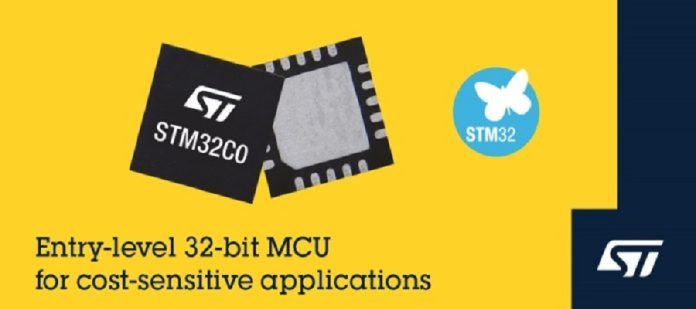ST is announcing today the launch of STM32C071s with 128 KB of flash and a USB controller, thus further cementing our new series as an entry-level MCU and gateway to 32-bit architectures. We are also divulging a new roadmap with devices housing up to 256 KB of flash by the end of next year and will update this blog post when they become available. In the meantime, samples of the STM32C071 should arrive by mid-2024 but are publicly revealed today to help integrators plan ahead. We are also announcing new price drops with the existing STM32COs featuring 32 KB of flash dipping below $0.24 for 10,000 units, making the series even more accessible.
Despite launching the STM32C0 only a few months ago, in January 2023, the reception has been so positive that competitors have adopted similar strategies, some even calling out STM32s in their documentation. In a nutshell, the new price-per-performance ratio of the STM32C0s disrupted the market by enabling integrators to not only consider 32-bit MCUs but also envision roadmaps and upgrade paths previously impossible. Hence, as we close 2023, we wanted the STM32C0 to continue disrupting markets by further lowering prices and increasing memory so more engineers can jump on the bandwagon.
What’s new?
STM32C071
The STM32C071 is the most impressive upgrade as it quadruples the memory configuration thanks to 128 KB of flash and 24 KB of RAM. Put simply, products that had to adopt significantly more expensive devices because of memory constraints can now exist in entry-level markets, thus making them vastly more competitive. And because we anticipate a lot of these systems to use USB to deliver power, we added a crystal-less USB controller. Indeed, engineers can use the internal clock, thus alleviating the need for an external crystal, which increases the bill of materials and the PCB layout complexity.
Consequently, the STM32C071 is highly symbolic because it brings more functionalities from the STM32G0 down to the STM32C0. Besides the USB controller, there’s an additional SPI and I2C interface and a 32-bit timer. After all, it’s been our strategy all along: make more features accessible to all systems. The STM32C071 is, therefore, a new roadmap enabler as it becomes a bridge between entry-level MCUs and the STM32G0 that teams would use to provide a more costly system to their customers featuring lower power consumption and more features. That’s why we also ensured pin-out compatibility between the STM32C071 and the STM32G0.
An age-old challenge: creating entry-level applications
The STM32C0
The STM32C0 is a new microcontroller for entry-level applications with a price that can fit bills of materials that previously required inexpensive 8-bit MCUs. Hence, the device increases the accessibility of the STM32 family of devices while offering significant computational throughput thanks to a Cortex-M0+ running at 48 MHz and scoring 114 points in CoreMark. Depending on the configuration, the STM32C0 series will also oscillate between 16 KB of Flash and 6 KB of RAM to 128 KB of Flash and 24 KB of RAM. ST also provides a wide range of packages to ensure PCBs that rely on a small 8-bit microcontroller retain their form factor.
The entry-level challenge
8-bit microcontrollers continue to play an exciting role in the industry, and ST remains dedicated to its STM8 series. Some companies need the EEPROM available in our 8-bit MCUs, while others depend on the AEC-Q10x automotive qualification of some of our devices. However, in many instances, designers choose an 8-bit MCU only because of pricing concerns. Their applications work well enough with 8-bit registers, meaning their primary focus is the bill of materials. The problem is that choosing an 8-bit architecture can have costly long-term consequences.
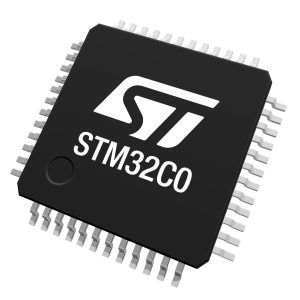
One of the challenges when working on an entry-level application is the limited upgradability. While prioritizing a low BoM, many successful projects often need more memory, computational throughput, pins, etc. However, 8-bit architectures have stricter restrictions and thus provide far fewer upgrade possibilities. The inherent limitations on 8-bit MCUs may also mean that a company has to qualify multiple devices instead of having one component that can fit numerous applications. Finally, as the industry inevitably marches toward 32-bit systems, using an 8-bit device may prevent developers from using software stacks or existing codes that would vastly shorten their time to market.
A new solution: a 32-bit device as an alternative to an 8-bit MCU
How is ST helping developers transition to 32-bit?
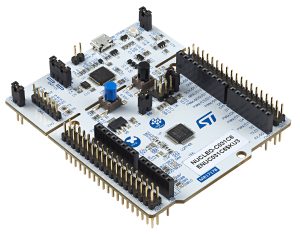
ST understands that despite all the benefits of a 32-bit architecture, financial and physical constraints may force some teams to use an 8-bit alternative. That’s why the STM32C0 has packages and a price rivaling 8-bit MCUs. Put simply, it opens engineers to new markets by enabling them to transition without blowing up their BoM or existing designs. Given ST’s guarantee of reliability, our device’s ability to support operating temperatures of up to 125ºC, and many peripherals, the STM32C0 is the most affordable MCU today.
Furthermore, ST ensured that transitioning from an 8-bit architecture to a 32-bit one would be as efficient and straightforward as possible. For example, we published an application note with guidelines for moving from an STM328L or STM328S to an STM32C0. It delves into peripheral migration and even shows that moving to a 32-bit architecture often means an increase in code size of only 6% to 15% in most cases. ST also organized a webinar available on demand, and the STM32 development environment can greatly optimize operations. Tools like STM32CubeMX and STM32CubeIDE, debug software like STM32CubeProgrammer, or STM32Cube expansion packages optimize workflows and even help reuse code or modules.
How is the STM32C0 facilitating the transition?
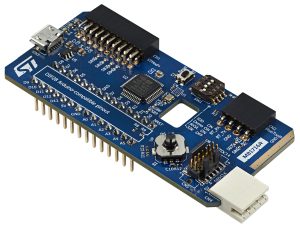
The STM32C0 wasn’t only designed to encourage engineers to transition from 8-bit systems but to breed more capable entry-level applications. Consequently, we worked on improving the feature density. The STM32C0 thus has one of the smallest packages for a general-purpose MCU thanks to its 3 mm x 3 mm 20-pin QFN housing, which is only possible because the die is so tiny. ST also offers an 8-pin SO8N version or a particularly thin WLCSP12 package. Similarly, the STM32C0 has power consumption modes significantly lower than other 8-bit devices, which means it’s possible to create more efficient designs.
How is the STM32C0 a stepping stone to more powerful systems?
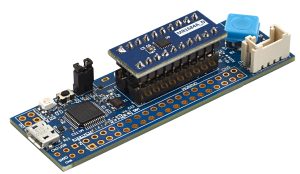
The most astute readers will have recognized that the new STM32C0 takes essential cues from the STM32G0, which uses the same Cortex core. Consequently, ST ensured developers could quickly move from the STM32C0 to the STM32G0. For instance, the new MCU has the same single Vdd and Vss power supply line found on the STM32G0, simplifying PCB designs and reducing costs. The STM32C0 also includes a highly accurate internal high-speed RC oscillator at 48 MHz. As a result, designers don’t need to add an external one, which lowers the overall BoM. The two devices also share a similar ADC and timers, and a consistent pinout configuration facilitates the move from one to the other.
First Steps
The best way to start experimenting with the STM32C0 is to get one of the development boards released last January. The NUCLEO-C031C6 is a traditional Nucleo-64 system with an Arduino Uno V3 connector to allow users to stack expansion cards. The STM32C0316-DK uses the same STM32C031 device but in a bundle that comes with the STLINK-V3MINIE, the first STLINK probe to use a USB-C port. The board also features a DIP28 connector compatible with the ATMEGA328 8-bit microcontroller. Interestingly, the board can also welcome STM32G0 devices. It thus serves as a transition tool to migrate to 32-bit applications and more easily experiment with a more powerful MCU.
Finally, the STM32C0116-DK is a smaller platform that uses the STM32C011 in a DIL20 module so teams can remove and share the module from one board to the next. ST is, therefore, offering a new approach to prototyping to make workflows more practical by creating a portable and interchangeable solution.
Read the full article at https://blog.st.com/stm32c0/


